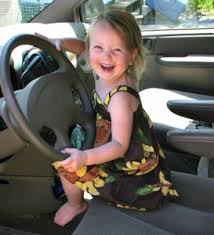The Joy of Driving: A Journey of Freedom and Exploration
Driving is more than just a way to get from point A to point B; it’s a transformative experience that offers a sense of freedom and exploration like no other. Whether you’re cruising down the open highway with the wind in your hair or navigating through bustling city streets, driving allows you to connect with the world around you in a unique and profound way.
One of the most remarkable aspects of driving is the feeling of independence it brings. Behind the wheel, you are in control of your own destiny, able to choose your route, set your pace, and make spontaneous detours along the way. The road becomes your canvas, and each turn offers a new opportunity for adventure.
Driving also provides a sense of liberation from the constraints of daily life. As you leave behind familiar surroundings and venture into unknown territory, you open yourself up to endless possibilities and unexpected discoveries. Whether it’s stumbling upon a hidden gem off the beaten path or witnessing a breathtaking sunset over a vast landscape, driving allows you to embrace the beauty and serendipity of life on the road.
Moreover, driving fosters a deep connection with both yourself and your surroundings. The rhythmic hum of the engine, the sensation of acceleration as you merge onto the highway, the panoramic views unfolding before you – all these elements combine to create an immersive sensory experience that heightens your awareness and appreciation of the present moment.
Ultimately, driving is not just about reaching a destination; it’s about embarking on a journey – both physical and metaphorical – that enriches your soul and expands your horizons. So next time you slide behind the wheel, take a moment to savor the freedom, excitement, and wonder that driving has to offer. Let go of all inhibitions, embrace the open road ahead, and let your spirit soar as you embark on another unforgettable adventure.
Frequently Asked Questions About Learning to Drive: Skills, Definitions, and Tips for Beginners
- What are the driving types?
- What are the basic driving skills?
- How do beginners start driving?
- What is the definition of driving?
- What do you mean by driving?
- How to teach a beginner to drive?
What are the driving types?
There are various driving types that cater to different preferences and needs. Some common driving types include city driving, which involves navigating through urban traffic and busy streets, highway driving for long-distance travel at higher speeds, off-road driving for adventurous terrain exploration, and defensive driving focused on anticipating and avoiding potential hazards on the road. Each driving type requires specific skills and awareness to ensure a safe and enjoyable experience behind the wheel.
What are the basic driving skills?
Mastering the basic driving skills is essential for becoming a safe and confident driver on the road. These fundamental skills include understanding and obeying traffic laws, maintaining proper speed and distance from other vehicles, using turn signals effectively, executing smooth lane changes and turns, practicing defensive driving techniques, and being aware of road conditions at all times. Developing these core competencies not only enhances your driving proficiency but also ensures the safety of yourself and others on the road. By honing these basic skills through practice and diligence, you can navigate diverse driving scenarios with ease and precision.
How do beginners start driving?
For beginners looking to start driving, the first step is to obtain a learner’s permit by passing a written test on driving rules and regulations. Once you have your permit, practice behind-the-wheel skills with a licensed driver, such as a parent or instructor. Familiarize yourself with the vehicle’s controls, practice basic maneuvers in a safe environment, and gradually build confidence on the road. Consider enrolling in a driver’s education course for formal training and guidance. Remember to always prioritize safety, follow traffic laws, and stay calm and focused while driving as you gain experience and become more comfortable behind the wheel.
What is the definition of driving?
Driving is the act of operating a motor vehicle, typically a car, truck, or motorcycle, to transport oneself or others from one location to another. It involves controlling the vehicle’s speed, direction, and movement in accordance with traffic laws and road conditions. Driving requires a combination of physical skills, such as steering and braking, as well as cognitive abilities to make quick decisions and react to changing situations on the road. Overall, driving encompasses the responsibility of safely navigating through traffic while ensuring the well-being of oneself and others on the road.
What do you mean by driving?
Driving refers to the act of operating a vehicle, typically a car, truck, or motorcycle, to transport oneself or others from one location to another. It involves controlling the vehicle’s speed, direction, and movement in accordance with traffic laws and road conditions. Driving requires a combination of physical skills, such as steering, accelerating, and braking, as well as cognitive abilities to make quick decisions and react to changing circumstances on the road. Overall, driving is a fundamental aspect of modern transportation that provides individuals with the freedom and flexibility to travel independently and explore new destinations.
How to teach a beginner to drive?
Teaching a beginner to drive requires patience, clear communication, and a focus on building confidence behind the wheel. Start by familiarizing the novice driver with the vehicle’s controls and functions in a safe, empty space. Introduce basic driving concepts such as steering, accelerating, braking, and turning gradually, allowing the learner to practice each skill until they feel comfortable. Provide constructive feedback and encouragement throughout the process, emphasizing the importance of safety and attentiveness on the road. Practice in different driving conditions and environments to help the beginner develop versatile driving skills. Remember that every beginner learns at their own pace, so tailor your teaching approach to suit their individual needs and comfort level.




